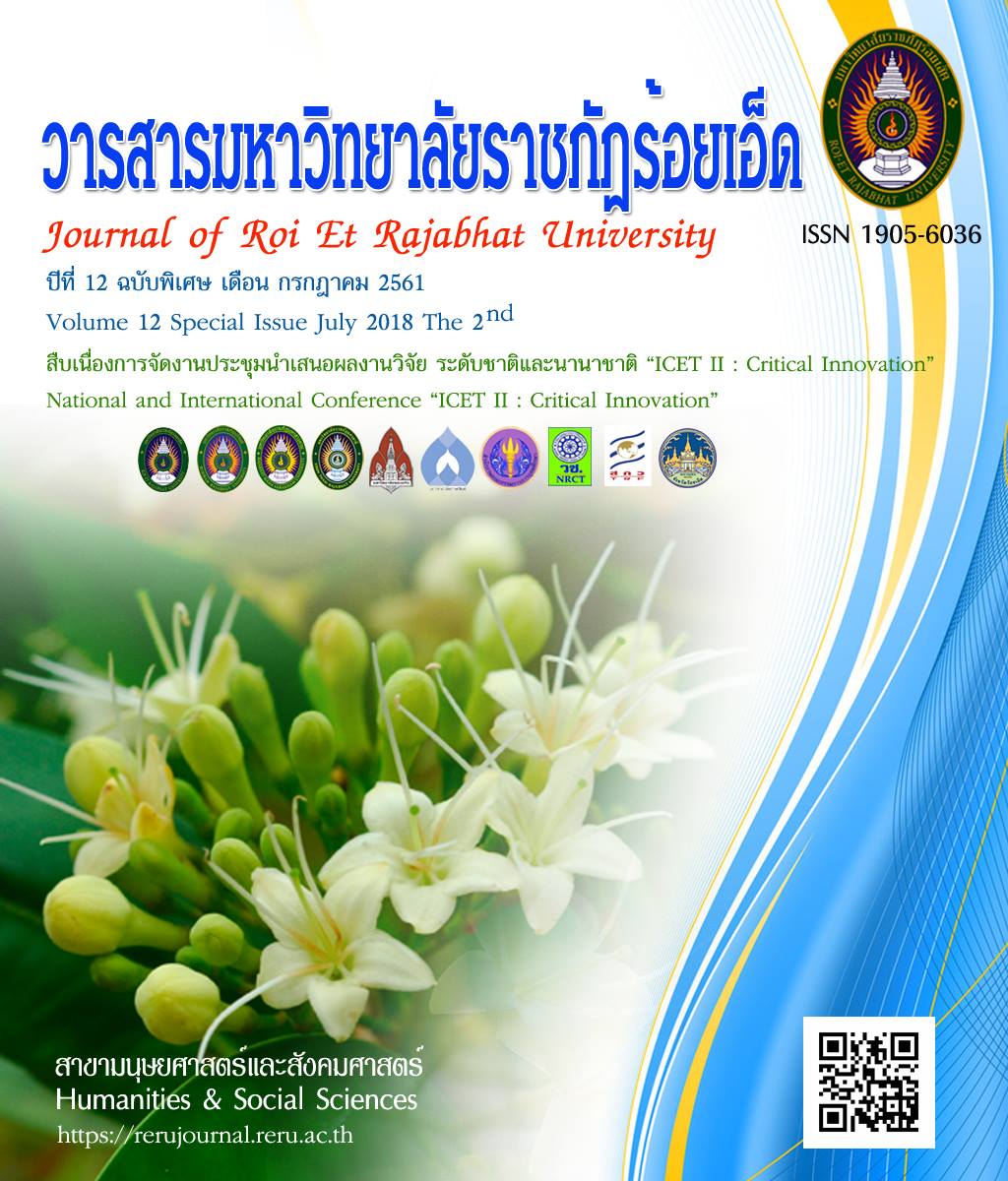Effects of the Antecedent Variable on Strategic Organizational Flexibility Capability: An Empirical Investigation of Tour Businesses in Thailand
Keywords:
Strategic organizational, flexibility capability, Tour businessesAbstract
Strategic organizational flexibility capability has been as a key success factor of organization strategy in accomplishment in inconsistent business environments. Base on contingency theory describes organizational design and systems in order for them to be appropriate for the environment changing by uncertainty.The objective of this study was to investigate the relationship between the factors that affect strategic organizational flexibility capability including executive long-term vision, open-mindedness culture, technology competency and environment complexity. The results were derived from a survey of 335 tour businesses in Thailand. The hypothesized relationships among variables are examined by using ordinary least square (OLS) regression analysis. Results suggest that executive long-term vision has the most influence on strategic organizational flexibility capability. Moreover, the contributions of theoretical and managerial, conclusion and suggestions for future research are also discussed.
References
Adner, R. and Levinthal, D. (2001). Technology evolution and demand heterogeneity and technology evolution: Implications for product and process innovation. Management Science, 47(5), 611-628.
Afuah, A. (2000). How much do your co-opetitors’ capabilities matter in the face of echnological change?. Strategic Management Journal, 21(3), 387-404.
Baker, B. P., Day, R. and Salas, E. (2003). Teamwork as an essential component of high-reliability organizations. Health Research and Educational Trust, 41(4),1576-1598.
Bonn, I. and Fisher, J. (2011). Sustainability: The missing ingredient in strategy. Journal of Business Strategy, 32(1), 5-14.
Burnes, B. (1992). Managing Change: A Strategic Approach to Organizational Development and Renewal. London: Pitman Publishing.
Carmen, O. C., Maria de la Luz, F. A. and Salustiano, M. F. (2006). Influence of top management team vision and work team characteristics on innovation: The Spanish case. European Journal of Innovation Management, 9(2), 179-201.
Cabrera, A., Cabrera, E. F. and Barajas, S. (2001). The key role of organizational culture in a multi-system view of technology-driven change. International Journal of Information Management, 21(3), 245-261.
Caron, N., Pratoom, K. and Sujchapong, P. (2015). Human resource diversity management capability and firm survival: Empirical evidence from hotel business in Thailand. The Business Review, 23(1), 136-158.
Chen, G., Donahue, L. M. and Klimoski, R. J. (2004). Training undergraduates to work in organizational teams. Academy of Management Learning and Education, 3(1), 27-40.
Cingoz, A. and Akdogan, A. A. (2013). Strategic flexibility, environmental dynamism, and innovation performance: An empirical study. Procedia - Social and Behavioral Sciences, 99, 582-589.
Cooke, R. A. and Szumal, J. L. (2000). Using the Organizational Culture Inventory to Understand the Operating Cultures of Organizations. Thousand Oaks, CA: Sage.
Doty, D. H., Glick, W. H. and Huber, G. P. (1993). Fit, equifinality and organizational effectiveness: A test of two configurational theories. Academy of Management Journal, 36(6), 1196-1250.
Drazin, R. and Van de Van, A. H. (1985). Alternative forms of fit in contingency theory. Administration Science, 30(4), 514-539.
Dreyer, B. and Gronhaug, K. (2004). Uncertainty, flexibility, and sustain competitive advantage. Journal of Business Research, 57, 484-494.
Dwyer, L. M., Cvelbar, L. K., Edwards, D. J. and Mihalic, T. A. (2014). Tourism firms’ strategic flexibility: The case of Slovenia. International Journal of Tourism Research, 16(4), 377–387.
Elmuti, D., Abou-Zaid, A. S. and Jia, H. (2012). Role of strategic fit and resource complementarity in strategic alliance effectiveness. Journal of Global Business and Technology, 8(2), 16-28. Evans, J. S. (1991). Strategic flexibility for high technology manoeuvres: A conceptual framework. The Journal of Management Studies, 28(1), 69-89.
Foster, R. D. and Akdere, M. (2007). Effective organizational vision: Implications for human resource development. Journal of European Industrial Training, 31(2), 100-111.
Genchev, S. and Willis, G. (2014). A note om manufacturing flexibility as a firm-specific dynamic capability. Society of manufacturing engineering (SME), 2, 100-103.
Grant, R. M. (1991). The resource-based theory of competitive advantage: Implications for strategy formulation. California Management Review, 33(3), 114-135.
Hair, J. F., Black, W. C., Babin, B. J. and Anderson, R. E. (2010). Multivariate data analysis: A global perspective. 7th ed. New Jersey: Pearson prentice hall.
Hernández‐Mogollon, R., Cepeda‐Carrión, G., Cegarra‐Navarro, J. G. and Leal‐Millán, A. (2010). The role of cultural barriers in the relationship between open‐mindedness and organizational innovation. Journal of Organizational Change Management, 23(4), 360-376.
Kaleka, A. (2011). When exporting manufacturers compete on the basis of service resources and marketing capabilities driving service advantage and performance. Journal of International Marketing, 19(1), 40-58.
Krejcie, R. V. and Morgan, D. W. (1970). Determining sample size for research activities. Educational and Psychological Measurement, 30(3), 607-610.
Downloads
Published
How to Cite
Issue
Section
License
บทความที่ได้รับการตีพิมพ์เป็นลิขสิทธิ์ของวารสารมหาวิทยาลัยราชภัฎร้อยเอ็ด
ข้อความที่ปรากฏในบทความแต่ละเรื่องในวารสารวิชาการเล่มนี้เป็นความคิดเห็นส่วนตัวของผู้เขียนแต่ละท่านไม่เกี่ยวข้องกับมหาวิทยาลัยราชภัฎร้อยเอ็ด และคณาจารย์ท่านอื่นๆในมหาวิทยาลัยฯ แต่อย่างใด ความรับผิดชอบองค์ประกอบทั้งหมดของบทความแต่ละเรื่องเป็นของผู้เขียนแต่ละท่าน หากมีความผิดพลาดใดๆ ผู้เขียนแต่ละท่านจะรับผิดชอบบทความของตนเองแต่ผู้เดียว





